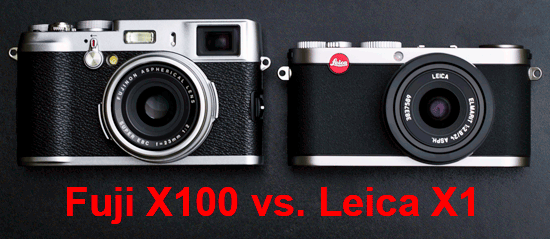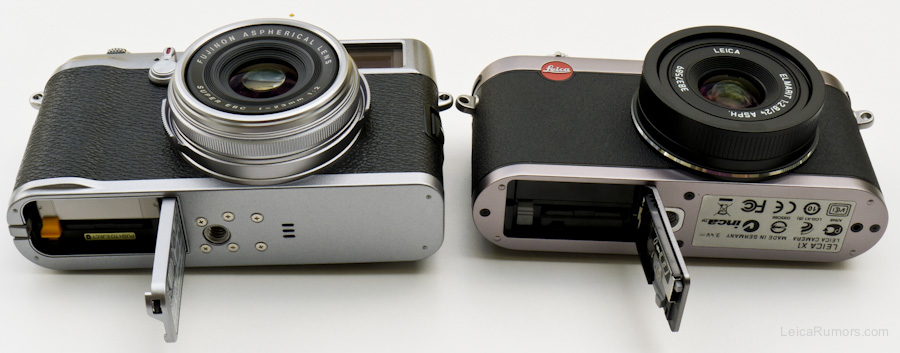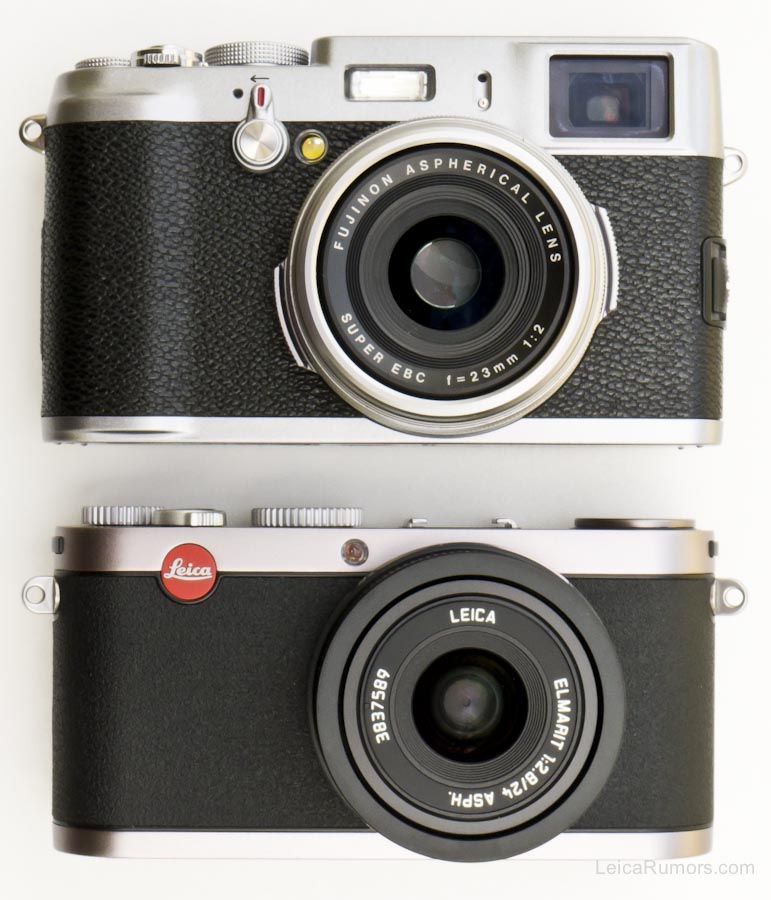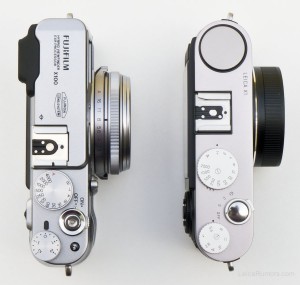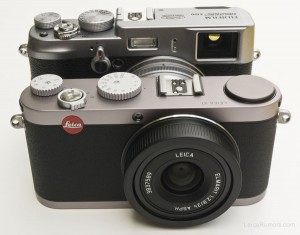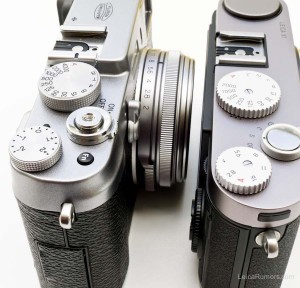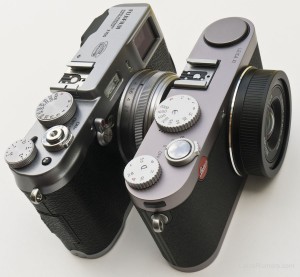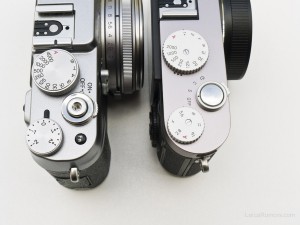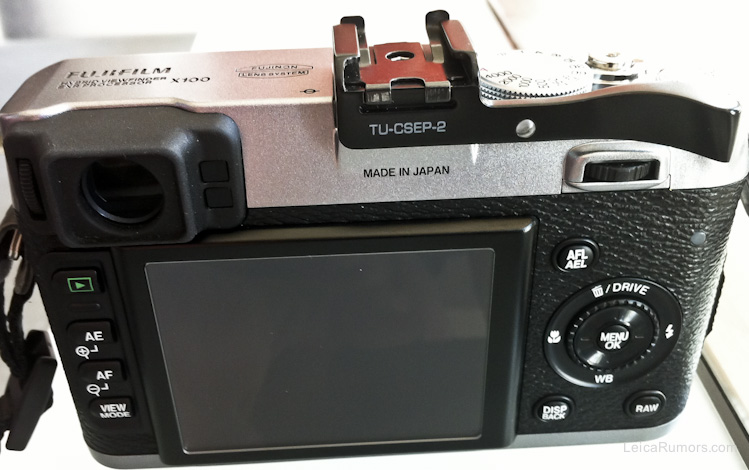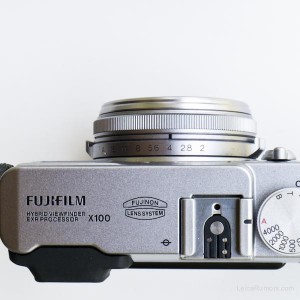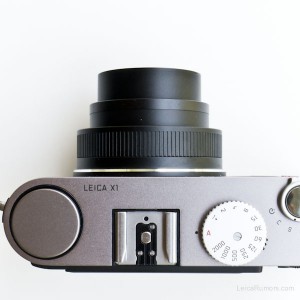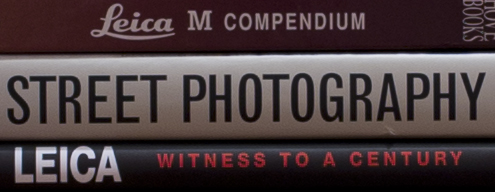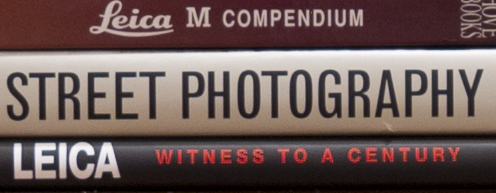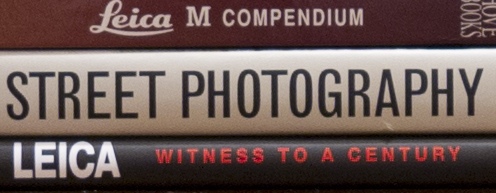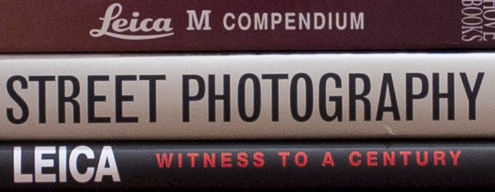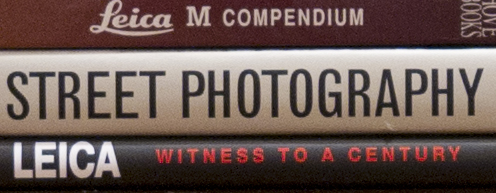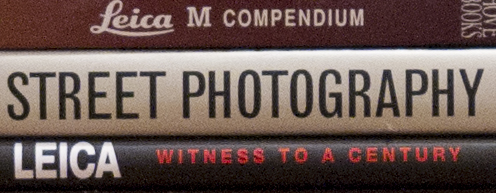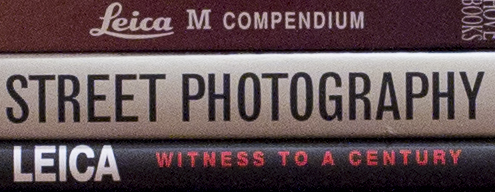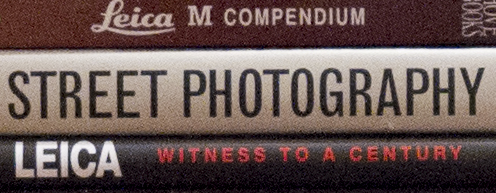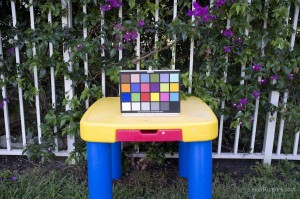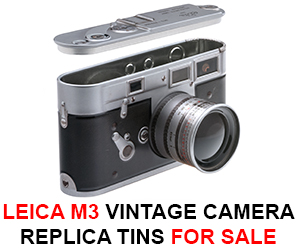There are many good Fuji X100 reviews online. In this post I will concentrate on the Fuji X100 vs. Leica X1 cameras comparison. Unfortunately, I could not publish this online earlier because I just got my Fuji X100 last week. You can click on most of the images for larger view.
General
I have already compared the Fuji X100 and Leica X1 specifications in details. In terms of size, the X100 fits better in my hands. It is slightly bigger (and heavier) than the X1 because of the built-in hybrid viewfinder. Both cameras have very similar buttons/dial layout and location, even down to the battery door 🙂 The X100 has also some extra buttons for the various viewfinder options.
The aperture selector on the X1 is on the top of the camera where on the X100 it is located on the lens. The X100 has a dedicated exposure compensation dial on top. I wish Fuji did implement also the on/off switch with continuous and self timer selections the same way as Leica does. The mode dial on the back of the Fuji camera is small and very soft – it takes some time to get used to. The command dial and buttons on the back of the X1 are firmer which makes them easier to use (identical to the dial on the M9). The speed dial on top of the Fuji X100 is firmer (again, just like the M9). The speed and aperture dials on the Leica X1 are very loose and it is very easy to accidentally change the settings. It is almost like Fuji and Leica decided to provide only one firm dial on their camera – the X100 got the shutter and, the X1 got the command dial.
Few other observations:
- Fuji found the possible worst location to place the LED light – exactly where one would place their thumb. The LED on the Leica X1 is where it is suppose to be – above the LCD screen.
- A nice feature on the Fuji X100: when pressing and holding the DISP/BACK button, all sounds, flash and assists lights get disabled for discrete shooting.
- When selecting a macro mode for example, the Fuji X100 resets the settings after the camera is turned off. Leica X1 keeps that macro selection even after the camera is being turned off.
- Fuji X100 has one programmable Fn button.
- Fuji X100 has an optional (and expensive) lens hood and a filter adapter ring.
- The Leica X1 ISO selection includes the Auto ISO function, the Fuji X100 doesn’t.
- The startup time of both cameras is identical, but the Leica takes longer to turn off.
- You can get a black Leica X1, the Fuji X100 comes only in silver.
Similar to the Leica X1, adding a ThumbsUp to the Fuji X100 will definitely improve the ergonomics of the camera since your thumb can accidentally press some of the buttons located on the back. The current TU-CSEP-2 model is a little bit loose on the X100 – hopefully Match Technical Services will come up with a new version specifically designed for the Fuji X100:
The Fuji X00 lens is made out of metal and it does not expand where the X1 is made of plastic and it expands after the camera is turned on (almost 3 times its original size):
Of course the most attracting aspect of the Fuji X100 is the hybrid viewfinder which can show an image preview right after taking a picture – no need for “chimping”. The viewfinder can display a lot of information: framing guidelines, electronic level, distance indicator, histogram, aperture, shutter speed, ISO, exposure compensation, AE selection, flash mode, WB, jpg mode, dynamic range, frames count, image size, battery level. You can select and choose in the menu what is displayed in the viewfinder. Switching to EVF is easily done by turning the switch located in the front of the camera.
Menu System and LCD screen
I definitely like better the simplicity of the Leica X1 menu. The Fuji X100 menu has two categories: shooting and set-up menu and I am still getting confused where each setting is located. Merging both categories into one menu would simplify the navigation. The command dial options on the Fuji X100 (flash, macro, WB, drive) are set to disappear very quickly after you click on them and often the selection was gone before I was able to make my choice.
The 2.8 in. 460,000 dots LCD screen of the X100 is excellent, much better than the 2.7 in. 230,000 dots screen of the X1.
| Fuji X100 menu | Leica X1 menu |
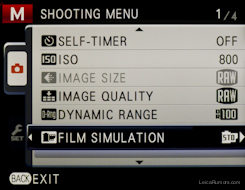 |
 |
Autofocus
The manual focus of both cameras is equally useless (at least to me). The X100 and the X1 have a magnifier option and a DOF scale indicator, but I still find MF difficult and unreliable.
The Leica X1 has a louder AF motor.
When in autofocus mode, the Fuji X100 appears to be slightly faster in daylight and much faster when focusing in low light:
Sharpness
The sharpness of the Fujinon and Elmarit lenses (both Aspherical) is almost identical. At f/2.8 the Fuji X100 appears to be slightly sharper. At f/4 and above I could not see any differences (the examples below were taken from the center of a test chart @ 100% crop):
f/2.0
f/2.8
f/4.0
f/5.6
f/8.0
100% crop
Those 100% crops were taken at f/8. Again both lenses have identical sharpness:
| Original Fuji X100 image | Original Leica X1 image |
 |
 |
Bokeh
Next two images will show you the bokeh of the Fuji X100 and the Leica X1:
Light falloff (vignetting)
Leica has done a better job in controlling the lens vignetting:
| Fuji X100 | Leica X1 |
ISO performance
The ISO selector of the Fuji X100 lets you choose between L(100), 200, 250, 320, 400, 500, 640, 800, 100, 1250, 1600, 2000, 2500, 3200, 4000, 5000, 6400 and H(12800) where the Leica X1 choices are 100, 200, 400, 800, 1600 and 3200.
Next is an ISO comparison between both cameras. Fuji has definitely an edge when it comes to high ISO performance. In my eyes, the Fuji X100 @ ISO 6400 is identical to Leica X1 @ ISO 3200 (all samples 100% crop):
ISO 200
ISO 400
ISO 800
ISO 1600
ISO 3200
ISO 6400 (only Fuji X100)
Auto Exposure
The Auto Exposure of the Fuji X100 is off sometimes – I believe that it underexposes images. The reason I say this is because I have previously compared the Leica X1 with the D300s and the exposure of both cameras is identical (and I know that Nikon does have a very accurate AE). Here are two examples taken in manual mode at 1/30 sec, f/8 (see more samples at the bottom of this post):
| Fuji X100 at 1/30 sec, f/8, ISO 200 | Leica X1 at 1/30 sec, f/8, ISO 200 |
 |
 |
And here is the the same shot taken with the Fuji X100 in aperture priority – the camera selected 1/13 sec shutter speed:
Video
The Fuji X100 can record HD video (1280×720 at 24 fps) with stereo sound. Focus, exposure and WB are set automatically by the camera when in video mode. Before starting recording, you can set the aperture, WB, film simulation, exposure compensation and focus mode. There is also a 3x digital video zoom available that can expand the focal length to 105mm. The maximum recording time is 10 minutes. Video files are recorded in QuickTime format. Here is a video example – AF is very slow and there is plenty of “jello effect” when the camera is handheld. The Fuji X100 doesn’t have image stabilization, the Leica X1 has IS but it doesn’t have video.
Aperture Priority samples
Since the Fuji X100 slightly underexposes images, I could not do any direct comparisons with identical shutter speed/aperture settings. Here are few examples taken in aperture priority mode (images were not post-processed in any way, just directly converted and resized from RAW->JPG in Lightroom 3, full size samples are available on flickr):
| Fuji X100 | Leica X1 |
 |
 |
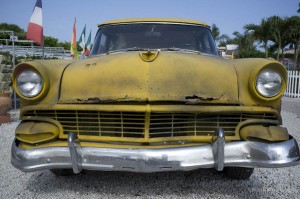 |
 |
 |
 |
 |
 |
 |
 |
 |
 |
 |
 |
 |
 |
 |
 |
 |
 |
B&W JPG
Some B&W jpg samples taken straight out of both cameras (all taken at normal settings):
| Fuji X100 | Leica X1 |
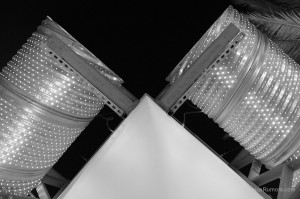 |
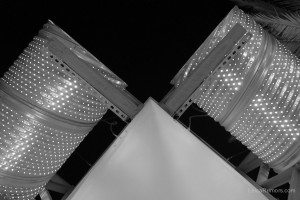 |
 |
 |
 |
 |
 |
 |
Here is a set of jpg files taken in vivid preset with both cameras:
| Fuji X100 Vivid (Velvia) jpg setting | Leica X1 Vivid jpg setting |
 |
 |
In terms of close up, The Fuji X100 lets you take pictures at 10cm while the X1 minimum focusing distance is 30cm. Here is the same image taken at 10cm with Fuji X100 (Velvia jpg preset):
Conclusion
The Fuji X100 and Leica X1 are very similar and different at the same time. The Leica X1 is a more mature camera in terms of firmware stability. The Fuji X100 has several quirks that are widely discussed in various online forums. Hopefully Fuji will address those in future firmware updates.
Fujifilm had a very clear goal in mind when they designed the X100 and they knew exactly what their target audience would be. I believe the X1 product line would have been much more successful if it was designed around the “fixed lens, mini-M9” idea. Many people will pick the X100 just because of its resemblance to a Leica M. The hype around the Fuji X100 is a clear indication of the demand for simple classical cameras with good image quality.
Even with the recent X100 price increase (update: B&H price went back down to $1200), I would still choose the Fuji X100 over the Leica X1 (and I do own a M9 as well). My preferences are not just based on the price but on the “overall package”. The Fuji X100 is a nice combination of a classical camera filled with the latest technology. The camera is small and has this “take me everywhere” appeal. The hybrid viewfinder is a great innovation and the ability to shoot HD video can be handy.
It will be interesting to see how Fujifilm will further develop the X100 line and whether other manufacturers will jump on the classical camera bandwagon. After all, competition can only be good for consumers.
Related links:
- Fuji X100 review
- Fui X100 accessories
- More Fujifilm Finepix X100 related information
- Fuji X100 vs. Leica X1 specs comparison
- Fuji X100 size comparison to Leica M3
- More FujiFilm FinePix X100 vs. Leica X1 comparisons
Please note that there could be a margin of error in some of the comparisons/tests mentioned in this post. Both cameras had the latest firmware version (v2.0 for the X1 and v1.01 for the X100).
